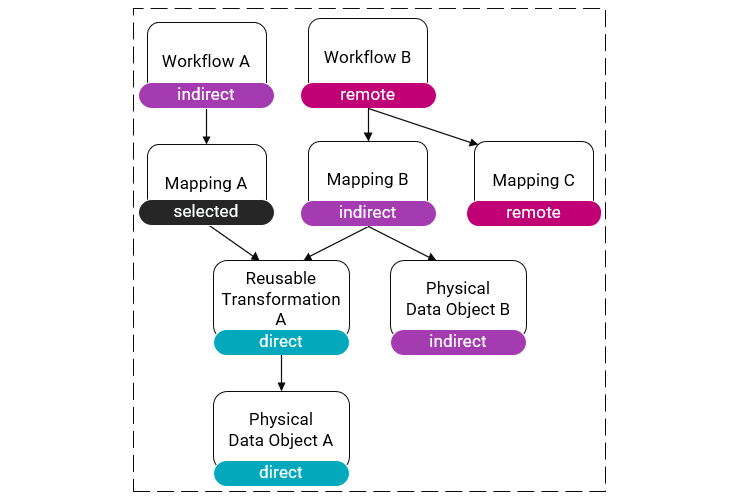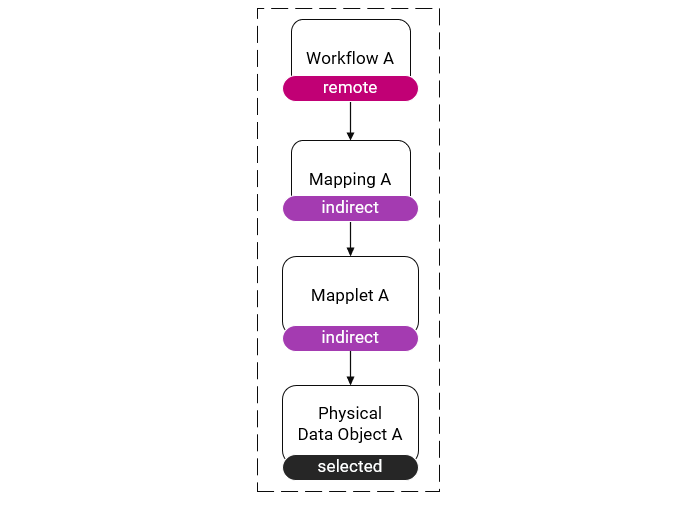Common Content for Data Integration
- Common Content for Data Integration 10.5.1
- All Products

Object
| Possible Direct Dependencies
|
|---|---|
Workflow
|
|
Mapping
|
|
Mapplet
|
|
Reusable Transformation
|
|
Logical Data Object
|
|
Physical Data Object
|
|
Parameter Set
|
|

Dependency Type
| Object
| Description
|
|---|---|---|
Direct
| Reusable Transformation A
| The reusable transformation is a direct dependency because the mapping
Mapping A uses the reusable transformation.
|
Direct
| Physical Data Object A
| The physical data object is a direct dependency because the mapping
Mapping A ultimately uses the data object through the reusable transformation
Reusable Transformation A .
|
Indirect
| Workflow A
| The workflow is an indirect dependency because the workflow uses the mapping
Mapping A .
|
Indirect
| Mapping B
| The mapping
Mapping B is an indirect dependency because the mapping
Mapping B uses a direct dependency of the mapping
Mapping A : the reusable transformation
Reusable Transformation A .
|
Indirect
| Physical Data Object B
| The physical data object is an indirect dependency because it is a direct dependency for the mapping
Mapping B which is an indirect dependency for the mapping
Mapping A .
|
Remote
| Workflow B
| The workflow is a remote dependency because it is an indirect dependency for the mapping
Mapping B which is an indirect dependency for the mapping
Mapping A .
|
Remote
| Mapping C
| The mapping
Mapping C is a remote dependency because it is a direct dependency for the workflow
Workflow B which is a remote dependency for the mapping
Mapping A .
|
